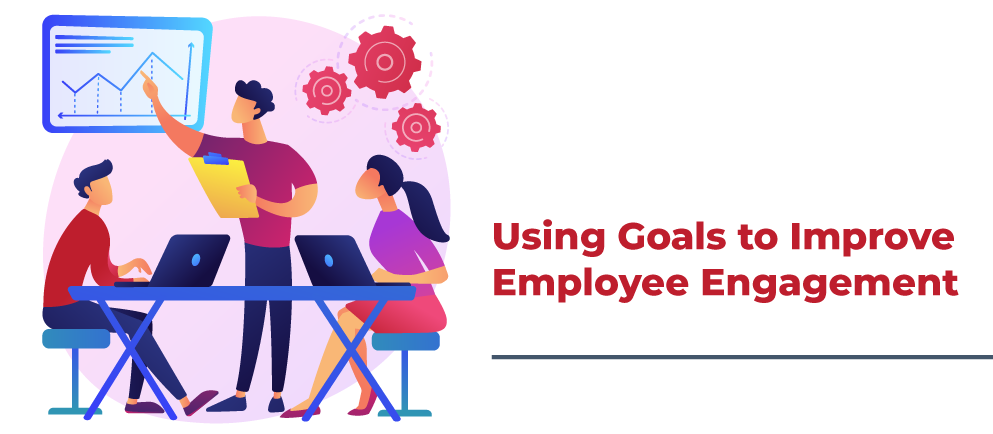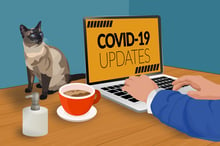Architecture & Engineering Firms’ Top Trends from the 43rd Annual Deltek Clarity Study

The Deltek Clarity report is the longest running, most comprehensive study in the architecture and engineering (A&E) industry for North America. The report digs into benchmarks, market outlook, and industry trends to help A&E firms identify where they are and how they compare to other firms in the industry. The 43rd Annual Report provides both surprising and not so surprising findings, as well as positive firm indicators for financial strength and project management excellence.
Deltek Clarity has participation from more than 540 companies and delivers more than 100 benchmarks and industry insights across the business. The study focuses specifically on architecture and engineering firms and other firms who support the design firms. The 43rd Annual Deltek Clarity Study collected responses from A&E firms of all sizes in North America based on 2021 fiscal data. Here is an overall look at what was reported this year, but for more detail, the 43rd Clarity Study can be reviewed in its entirety.
Consistent Challenges Across Departments
This was one of the report findings that was not surprising. The two biggest challenges across company departments were related to staffing and time. Business development is challenged to find the time to nurture client relationships while technology departments have a lack of time to invest in learning. Moreover, project management, human resources, and finance departments all cited staff shortages, finding, and retaining qualified staff as their top challenge.
In fact, 78% of the financial leaders identified that finding and retaining qualified staff is the number one financial challenge. This has been very different than what previous Clarity reports have shown in the past few years. In addition to staffing challenges, other consistent themes included business process automation and managing strong backlog and pipeline. All of these have an underlying theme of technology and how best to leverage technology to address some of the challenges companies are facing.
Purposeful Investment in Technology
This begins by measuring the digital transformation and maturity levels now and in the next five years, and how this aligns with the goals of the business. Then aligning business goals and IT goals to have that culture of efficiency and culture of innovation. According to the report, most firms identify themselves in that early or exploratory phase of maturity but nearly 70% of firms expect to be mature or advanced within the next five years. This is less optimistic than the previous year’s study. Some factors attributing to this may be that the pace of technology is moving so fast that the ultimate end goal seems to be constantly changing and/or not attainable.
The top three challenges related to technology were lack of time to invest in learning, cost of technology, and prioritizing which trends are most applicable. Companies are struggling to understand not only what the new technologies are, but how to apply them in projects and business improvements. Top emerging technology cited by the firms were geolocation, augmented reality, and Internet of Things.
These are often externally focused and can be leveraged in managing and executing projects. Not far behind in the cited top technology was big data and data science. Both can help firms to provide greater visibility and insight into what’s happening inside the firm.
What this all leads to is purposeful investment into technology. Firms are looking to invest in the right technology to meet firm goals, not necessarily the newest technology. Deltek calls this purposeful investment. It’s critical, with the challenges of lack of time and resources, to look at the firm’s current systems with the technology in place and make sure it’s using them to their maximum capacity.
Strong Market Forecast
As noted earlier, the report indicates a really strong market forecast for the North American A&E industry. However, there are limited resources to both pursue and perform work. With these issues in mind, firms are going to have to be more strategic about how best to capitalize.
Fortunately, the report does show a net revenue growth forecast of 17.6%. This is the highest that growth has been in the last ten years, and this is very optimistic over last year at an increase of 13.4 percentage points. Small firms were drivers for a lot of this positive push. In last year’s report, small firms had a negative forecast but now are rebounding back to a 14.6% net revenue growth forecast.
The overall percentage of firm revenue from the top three clients has decreased slightly from the previous year to 35%. This could show good or harmful trends. Firms may be strategically and purposefully diversifying their client base or competition may be winning work away from the top clients. This is a great time to lead these types of discussions internally to see how the firm compares.
Thus, while the forecast remains optimistic, it doesn’t come without challenges. About half of the firms said they are struggling to find the time to nurture client relationships. Combined with increased competition, firm leaders are trying to keep existing client relationships healthy and strong while looking for new prospects and revenue sources.
Project Delivery Keeps Improving
Projects are the core of what architecture and engineering firms do. The 43rd Annual Deltek Clarity Study indicates that, overall, A&E firms are becoming more confident in their project performance. 67.8% of projects are on or under budget, more companies (59%) are doing internal performance evaluations based on projects not waiting for an annual review, and 15% of firms are sharing their best practices through either a center of excellence or a project management office. Firms are focusing on project management as a discipline.
While more projects are staying on track or ahead when it comes to budget (67.8% of projects), they aren’t performing as well from a scheduling perspective. Just over half (58.5%) of projects are on or ahead of schedule according to the report. This number decreased by 6 percentage points from the previous year. These are areas that both firm leaders and project managers should evaluate to strategize, understand, and determine what is happening. Does the firm need additional training for project managers or is the schedule being driven by the clients but at the cost of the firm’s profitability?
One challenge could be access to timely data around projects. When asked about visibility around schedule variance, half the firms report low or very low visibility for project managers and principals. It’s challenging for project managers to proactively manage and keep the project schedule on track if there is a lack of visibility. This is a good opportunity to ask the firm’s project managers how visible their project schedule variance is and how better to improve that visibility.
Similar to other firm departments, top project management challenges include staff shortages, competing priorities, inexperienced project managers, and accurate project cost and timeline forecasting. When it comes to project management, how is the firm handling project schedules, are the schedule changes internally or client driven, how quickly can the firm train new project managers, how can technology improve the project delivery gaps, and do the project managers need more visibility and access to project data? Discussing these internally will help to continue to improve the firm’s project performance.
A&E Talent Staying, but Not Enough
While the talent shortage is not new news, the Deltek Clarity Study digs in a little deeper to see what’s exactly happening in the North American A&E Industry. One surprise finding was the employee turnover rate. This was expected to be high, but it’s 13.6% which is low compared to the 18-19% that is shown in the Deltek Clarity Global report. Additionally, the findings show that talent isn’t necessarily leaving the industry but rather moving to other A&E firms. This might be good for the industry, but maybe not for the firms struggling to refill the positions.
Medium-sized firms experience the highest turnover at 14.7%. Large firms are just below at 14.4% with small firms even lower at 11.9%. This lower turnover might be because smaller firms could have better employee engagement or be able to give different opportunities to grow.
Nonetheless, with the high turnover, firms are experiencing the biggest challenge with filling open positions. The majority of firms are seeing more open positions than they had last year (65% of firms) while a third (30%) have about the same number of open positions. For nearly half of the firms, it’s taking 60 to 90 days to fill a position.
With this talent challenge, it might be a good time for the firm to look at external factors such as candidates available in the market. Firms could also look internally to make sure their processes are as efficient as possible. This would include leveraging technology to streamline the recruiting process.
The top talent acquisition challenges noted in the study were the availability of good candidates in the marketplace, ability to offer competitive compensation to candidates, and matching qualified candidates to open positions. This is even trickling over to the finance department. Finance leaders are feeling the increase in labor costs, higher salary demands for candidates, and additional costs to keep employees engaged. These higher labor costs could affect the future profitability of projects.
In last year’s Deltek Clarity Study, succession planning and performance management were the top human resources’ challenges. This year, the challenges and priorities have changed. Now the top challenges for managing human resources are retaining employees, employee engagement/experience, and workforce capacity and planning.
Relatively Stable Financial Statements
The financial management section of the Deltek Clarity report is the longest running section of the report, with many findings showing a 10-year trend line. Firm financial leaders should review this section and analyze the trends and changes. For this year’s report, the financials are relatively stable but there are a few noticeable declines to note.
Operating profit on net revenue declined after a decade of growth to 12.8% from 19.0% from the previous year. Deltek Clarity sets a threshold of 15% operating profit on net revenue for its high performing firms. In this year’s study, high performing firms had 23.9% operating profit on net revenue and large firms were near that threshold at 14.6%.
Net labor multiplier is another key financial metric of the Deltek Clarity Study. This year’s multiplier increased just slightly to 2.99. The high performer firms had an average of 3.41 net labor multiplier. Something also to note is the top quartile net labor multiplier of 3.36.
Overall, the utilization rate has decreased but is hovering close to 60% at 58.5%. This is not a surprising finding because of the increased labor costs, number of open positions, and maybe the increase in business development or other non-billable activities. Small firms saw the biggest decrease from 63.9% last year to 60.9% this year.
Firms are seeing a strong backlog of nearly nine months. Large firms saw the biggest increase last year from 8.3 months to 9.94 months, and the top quartile is nearly 12 months of backlog. So, this is positive news for firms, if they are making sure that they can actually deliver on the work with the right resources.
44% of the reported top financial challenges listed finding and retaining qualified staff as the top challenge. This was a big jump from the prior year’s report. Other challenges for financial leaders were managing firm growth and increasing profitability. These top challenges are interdependent. Finding qualified staff and having to compensate for that top talent will affect the firm’s ability to increase profitability and grow the firm.
Diving Deeper
This has just been a glimpse of some of the findings in the 43rd Annual Deltek Clarity Study. Firms should download the report (click the image below) and dig into it to understand what’s happening in their business, how they are leveraging technology, and where there are opportunities for additional training and awareness. This will allow these firms to better educate their teams, make sure they understand what their process is, and how they contribute to the overall success of the firm.








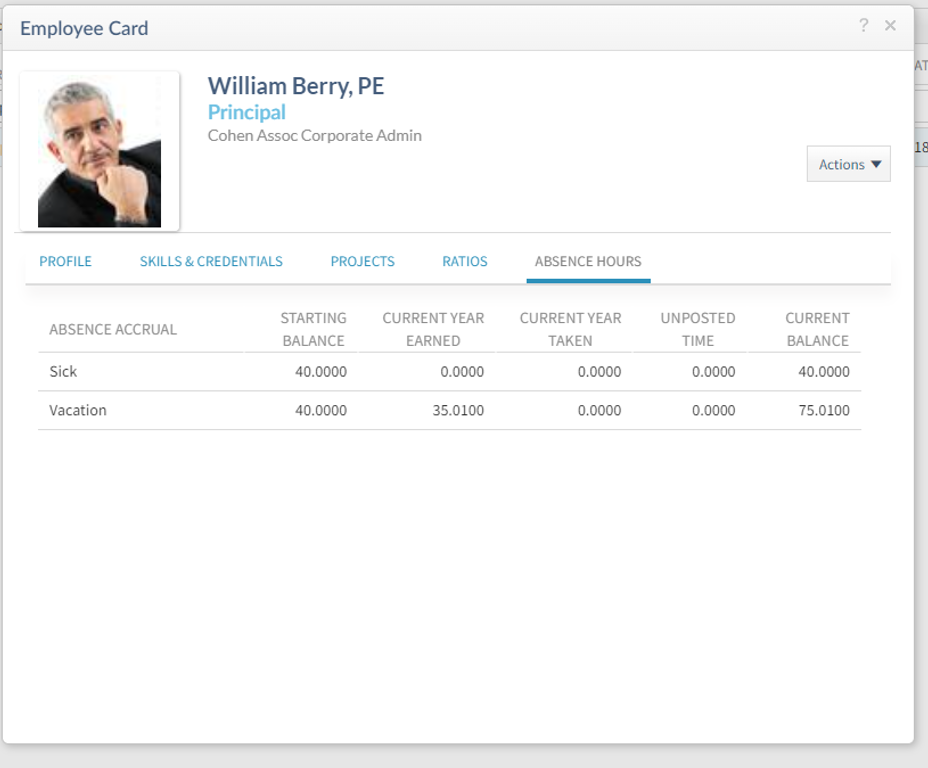
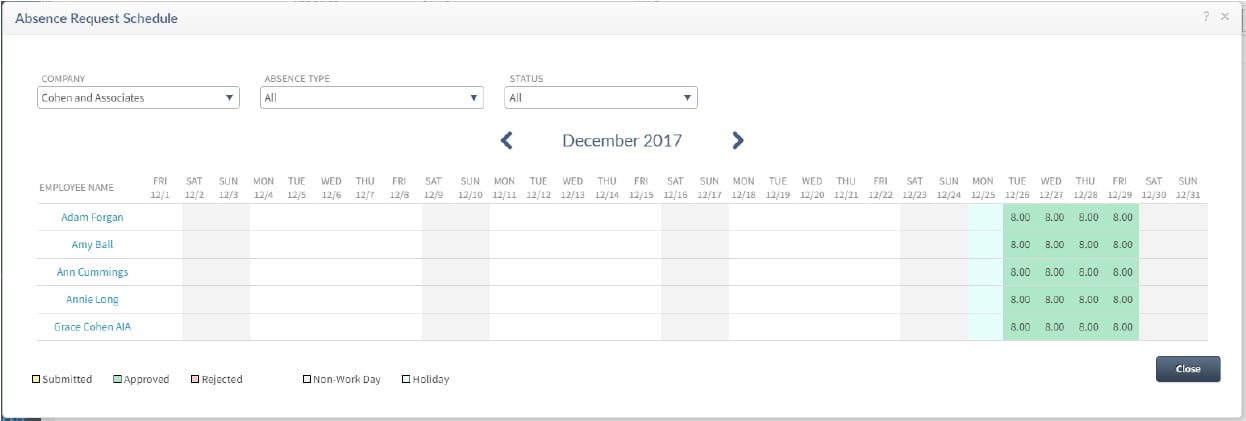


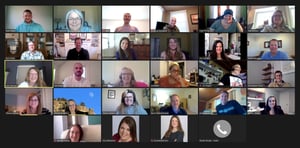 Now that you have the right people for remote work up to speed, think about ways to engage employees and offer professional development. Since you can’t just walk down the hall to see what is happening, you have to trust them and their desire to perform their duties. Continuous feedback and performance discussions are key. It is a good idea to check in to see how things are going in frequent intervals.
Now that you have the right people for remote work up to speed, think about ways to engage employees and offer professional development. Since you can’t just walk down the hall to see what is happening, you have to trust them and their desire to perform their duties. Continuous feedback and performance discussions are key. It is a good idea to check in to see how things are going in frequent intervals.
 Leadership teams and firm owners have countless business elements to focus on and decisions to make. Some decisions are no-brainers, others are hard, and some just need to wait for the “right time.” There are often firm improvements pitched for consideration that may not make it to the priority list, or that are labeled as a luxury rather than a need. The word “value” can often determine where an initiative may fall on that labeling scale. One initiative that is proving to be a need is moving your firm’s ERP solution like Deltek Vantagepoint or Vision to the cloud. Now is the time, and it should be an easy decision. Let us identify some of the many advantages of moving your ERP solution to the cloud.
Leadership teams and firm owners have countless business elements to focus on and decisions to make. Some decisions are no-brainers, others are hard, and some just need to wait for the “right time.” There are often firm improvements pitched for consideration that may not make it to the priority list, or that are labeled as a luxury rather than a need. The word “value” can often determine where an initiative may fall on that labeling scale. One initiative that is proving to be a need is moving your firm’s ERP solution like Deltek Vantagepoint or Vision to the cloud. Now is the time, and it should be an easy decision. Let us identify some of the many advantages of moving your ERP solution to the cloud.
